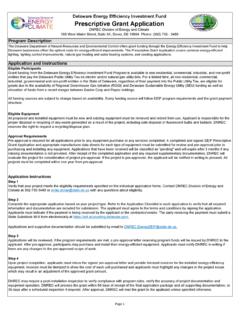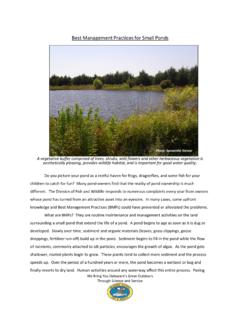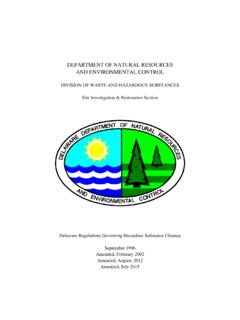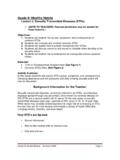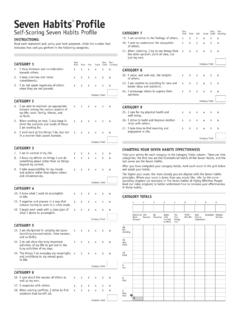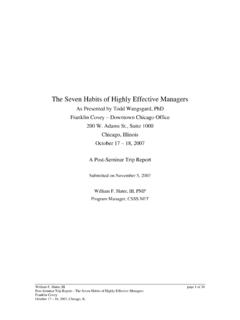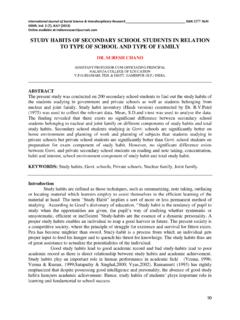Transcription of Delaware Department of Natural Resources and ... - …
1 Delaware Department of Natural Resources and Environmental Control ( dnrec ) Striped bass food habits project May 2006 Striped bass reduce feeding during spawning season: Although striped bass are known as voracious feeders, they seem to eat little in the period before they spawn. A good example is seen in this picture. She (the really big ones are usually females) is the largest striped bass ever caught during DDFW striped bass spawning stock sampling ( lbs). Despite her record size, gastric lavage showed her stomach was empty. She was then tagged and released unharmed. For more information on the Striped bass food habits project, please contact: John Clark Fisheries Biologist Delaware Division of Fish &Wildlife Box 330 Little Creek, DE 19961 (302) 739-4782 x 21 [insert hyperlink here] A growing population with a big appetite The rebounding of striped bass (Morone saxatilis) population from its extremely low level in the late 1980s to its current abundance is a fisheries management success story.
2 Striped bass populations are believed to be near their highest historical levels. Striped bass feed mainly on fish and invertebrates and this current large population of striped bass is obviously eating a lot of fish and invertebrates. The striped bass diet Striped bass will eat almost anything they can get into their large mouths. Striped bass of all sizes will feed on prey as small as opossum shrimp and as large as fish up to half their length. Previous food habit studies have shown they seem to prefer schooling baitfish, particularly Atlantic menhaden and bay anchovies. But they have been found with many different species of fish in their stomach, including weakfish.
3 Does the large and growing striped bass population pose a threat to other fish populations through their feeding? As the striped bass population has grown and the weakfish population declined in recent years, many people have wondered whether striped bass are causing some of the decline seen in the weakfish population through predation on weakfish. The goal of this project is to determine what the striped bass are eating in Delaware waters and if their predation of certain fish species may be high enough to effect those populations. A harmless method for retrieving the stomach contents of live striped bass Until recently, fish food habits studies required sacrificing the fish to examine the stomach contents.
4 A method for extracting the stomach contents of live fish and returning the fish unharmed to the water was introduced about 20 years ago and has since proven most effective. The method is called gastric lavage and it is simply an easy method of making the fish regurgitate its stomach contents. A tube is inserted through the fish s mouth into its stomach and the stomach is pumped full of water until the fish regurgitates the stomach contents. These food items are strained from the water and preserved for later identification and analysis. Although it is likely not a pleasant experience for the fish, the survival rate of striped bass that have gone through gastric lavage was well over 90% in a recent study.
5 Another advantage of gastric lavage is that it allows diet studies to be conducted with threatened and endangered fish species without hurting those fish. Photo courtesy of J. Hakala, Georgia DNR
